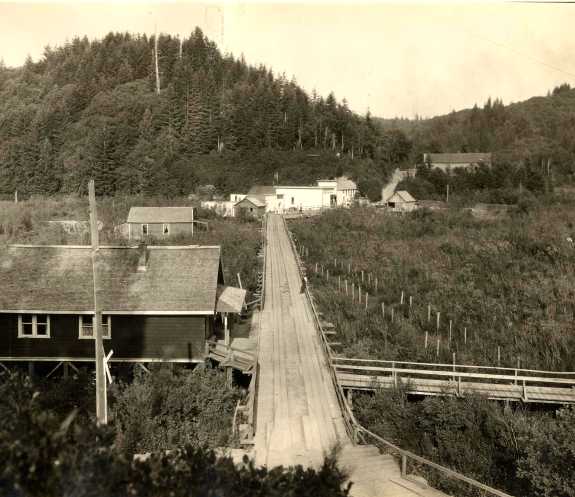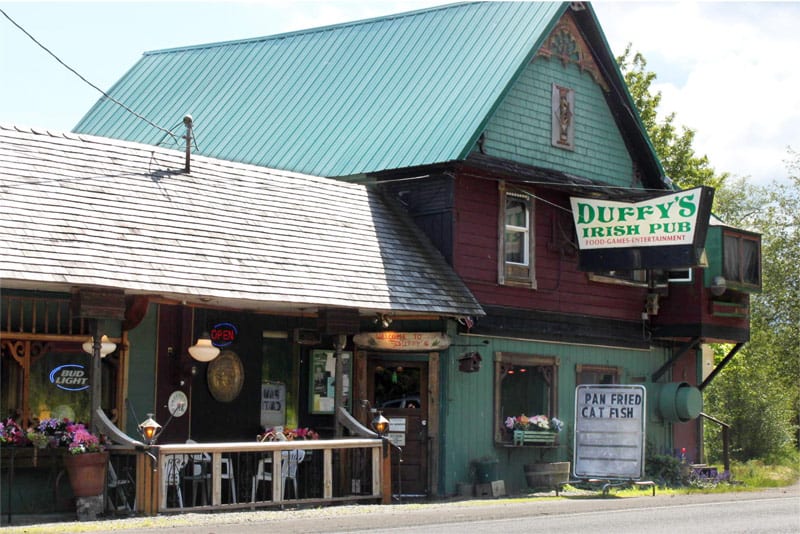Rosburg
 Rosburg is an unincorporated community located on the Grays River on SR 4, 15 miles northwest of Cathlamet. Rosburg has a post office, the Grays River Valley Community Center at Johnson Park, and the Rosburg Hall. Christian Rosburg, the town’s first postmaster, named Rosburg for himself. Both the Grays River Valley Center and the Rosburg Hall are used by local residents for various meeting and events. The Center offers a community library, exercise room, sewing room, gymnasium, and free films three Fridays a month. The Rosburg Store is a great stop for snacks, maps and more.
Rosburg is an unincorporated community located on the Grays River on SR 4, 15 miles northwest of Cathlamet. Rosburg has a post office, the Grays River Valley Community Center at Johnson Park, and the Rosburg Hall. Christian Rosburg, the town’s first postmaster, named Rosburg for himself. Both the Grays River Valley Center and the Rosburg Hall are used by local residents for various meeting and events. The Center offers a community library, exercise room, sewing room, gymnasium, and free films three Fridays a month. The Rosburg Store is a great stop for snacks, maps and more.
Deep River
Deep River was built on pilings because of the Columbia River tides, which came in twice a day. The sidewalks and roads were constructed of planks that were elevated at least six feet above high water. In 1917, Deep River had two stores, the Shamrock Hotel, a coffee shop, a community hall, a school, Pentti’s Westend Pool Hall, daily boat service to Astoria, a logging railroad, and the Deep River Holy Trinity Evangelical Lutheran Church. The church was established by Reverend J. J. Hoikka and built in 1898. The community sauna was operated by Hulda and Nestor Wirkkala and located between the hotel and pool hall.
 Many Finnish immigrants settled in Deep River and the surrounding areas of Washington. There were striking similarities between life in Finland and life in this area, including an economic life that depended largely on timber and salmon, both of which were plentiful in the Deep River area. The Pacific Northwest was an ideal destination for Finnish immigrants. There was free land that was covered with timber for them to claim. Seasonal work opportunities were available all year. There was salmon fishing in the spring and summer. Work was available at logging camps the rest of the year.
Many Finnish immigrants settled in Deep River and the surrounding areas of Washington. There were striking similarities between life in Finland and life in this area, including an economic life that depended largely on timber and salmon, both of which were plentiful in the Deep River area. The Pacific Northwest was an ideal destination for Finnish immigrants. There was free land that was covered with timber for them to claim. Seasonal work opportunities were available all year. There was salmon fishing in the spring and summer. Work was available at logging camps the rest of the year.
The two major early industries of the Washington territory, particularly in Deep River, were the timber and salmon-fishing industries.
 The Timber Industry
The Timber Industry
An article in a special section of the Ilwaco, Washington Tribune in 1970 celebrated 100 years of logging at Deep River. The author, Larry Maxim, described the life of the men who worked in the timber industry and felled the gigantic trees as men who were “giants with muscles of laced steel cable and the stamina of an Olympic athlete.” The men worked hard for extended periods of time and lived at the logging camps, which usually consisted of a bull barn, a cook shack, and a bunkhouse.
The bunkhouse was crude, just enough to keep out the rain. The bunks were just as crude, a few rough boards spread with straw. The logger had to do his own laundry. His laundry machine–each logger had one–was a five-gallon kerosene can in which he boiled his socks and underwear and sometimes took a sponge bath. (Maxim, 1970)
 Deep River church
Deep River church
Community Life, Schools, and Churches. Many of the immigrants’ children did not learn English until they attended school. The early rural schools in the area were small. The elementary schools were usually one-room buildings that served as many as 80 pupils. It was common for one female teacher to be responsible for teaching the children in all eight grades. Teachers were generally brought into the area from the “Outside,” but often married the local farmers, loggers, or fisherman and stayed in Deep River to raise their families.
Church activities were an integral part of community life. The Finnish settlers of Deep River, Naselle, and Salmon Creek organized into a congregation in 1894 as the Finnish Holy Trinity Evangelical Lutheran Church. They shared a pastor with the Astoria Finnish Church. The Deep River Holy Trinity Evangelical Lutheran Church was built in 1898 near the Deep River Cemetery.
The church has been restored and worth a visit. Also the Deep River Cemetery is still being used and has a deep history in the area. Make sure you see it when you visit.
Rosburg, WA
Deep River, WA

The bunkhouse was crude, just enough to keep out the rain. The bunks were just as crude, a few rough boards spread with straw. The logger had to do his own laundry. His laundry machine–each logger had one–was a five-gallon kerosene can in which he boiled his socks and underwear and sometimes took a sponge bath. (Maxim, 1970)


 The Timber Industry
The Timber Industry Deep River church
Deep River church